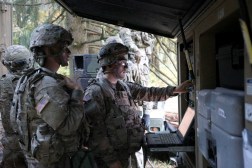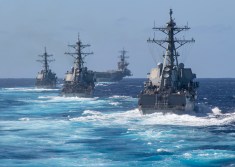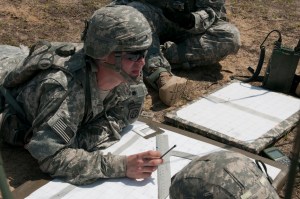Army looking for tech to help segment data

There are two types of data in the Army: Data that needs to move at the speed of milliseconds and data that doesn’t.
Figuring out what data fits under which category and how to best partition a network to meet the speed demands of that data is a challenge the Army is looking to private industry for help. The No. 2 for the Joint Staff’s J-6 command, control and communications office said the Army wants to find technologies that can help it segment different types of data across networks to save precious bandwidth in conflict zones.
“We are also concerned about overwhelming a limited network, particularly in a denied, degraded, intermittent or limited environment,” Army Brig. Gen. Rob Parker, deputy director of Joint Staff J-6, said during an AFCEA DC virtual event. “We are looking to industry to help us find technological solutions to work through that.”
An example of the type of data that needs to move fast is information relating to targeting. The military has been trying to find tech to help to ensure bombs and other weapons hit their target.
The Army is working to build a “data fabric,” a system of systems that data can flow across. It’s a multi-pronged challenge that the services hopes will enable faster, multi-domain operations by having data from machines in the air talk directly with machines on the ground, sea, space or cyberspace.
The Army’s tech backbone of its multi-domain operation strategy is Project Convergence, the connect-everything-to-everything, sensor-to-shooter networking project that itself is a part of the larger military-wide Joint All Domain Command and Control (JADC2) concept of operations. It’s a nesting doll of technical systems and acronyms, but the essential challenge is to find ways to connect and use more data in operations.
The specific challenge Parker spoke about is ensuring that once platforms are connected through a data fabric, bandwidth and other limited resources are properly used.
“We need to figure out how we are sending the right data and only the necessary data,” Parker said.
What the military itself is doing to help answer that question is drawing up new cloud architectures and data management policies. The Army’s “nirvana” for cloud is a “poly-cloud environment” that provides continuous enterprise support and tactical-edge capabilities.
It’s a part of the unified network plan to integrate cloud and networking capabilities championed by the Army’s top uniformed IT official Lt. Gen. John Morrison, deputy chief of staff for the G-6. The architecture design of that network will be coming in the summer, Morrison said.
DOD Deputy Secretary Kathleen Hicks also recently released new “Data Decrees” that aim to implement the data strategy. Parker said those decrees and future policies from the deputy secretary and chief data officer will inform future standards and technical directives the J-6 and other Joint Staff offices will be putting out.
“In those, we will see reflections of those data decrees,” he said.





